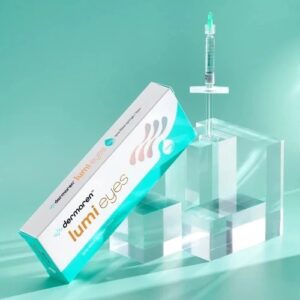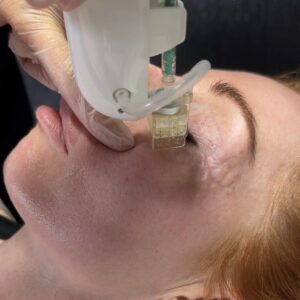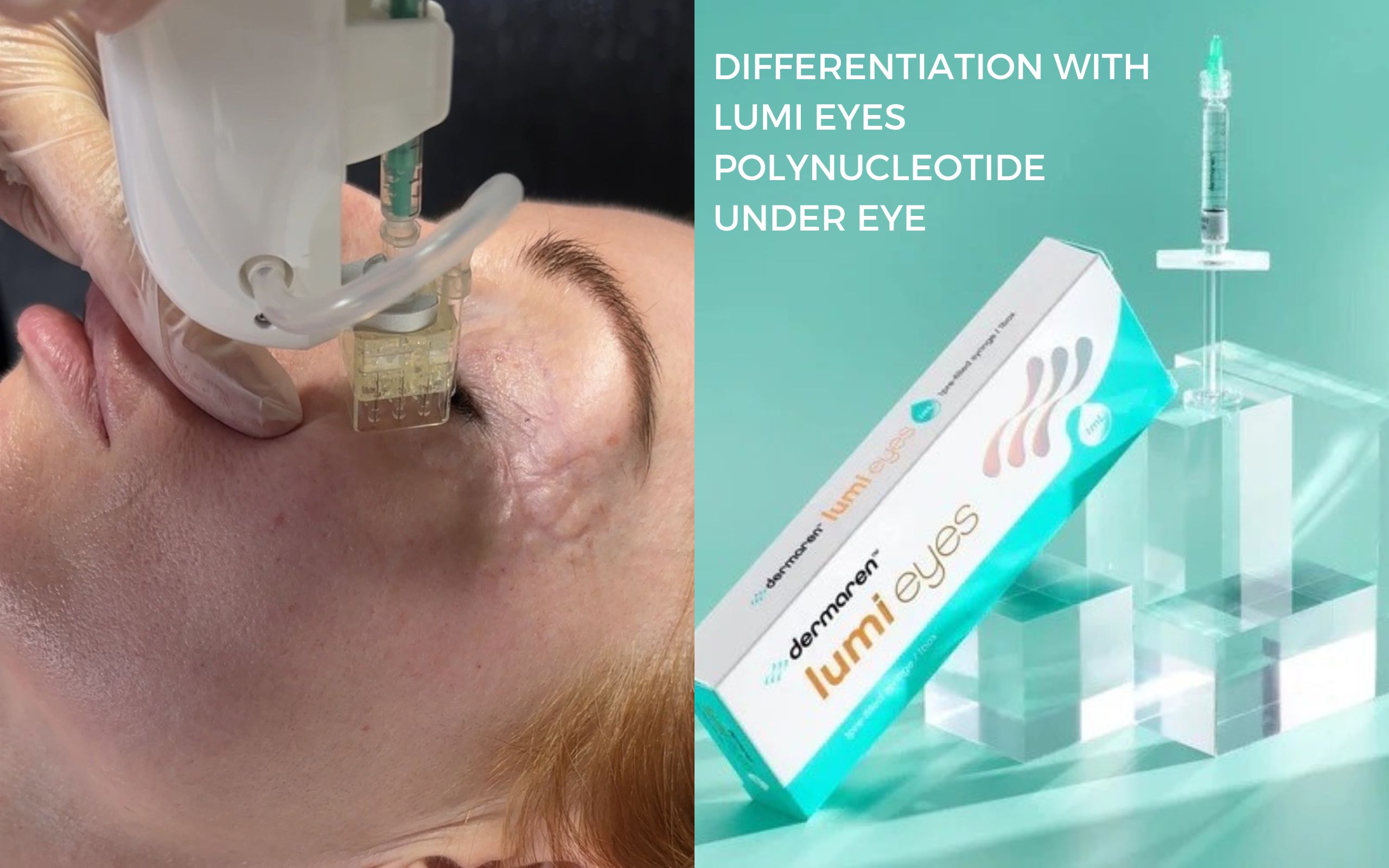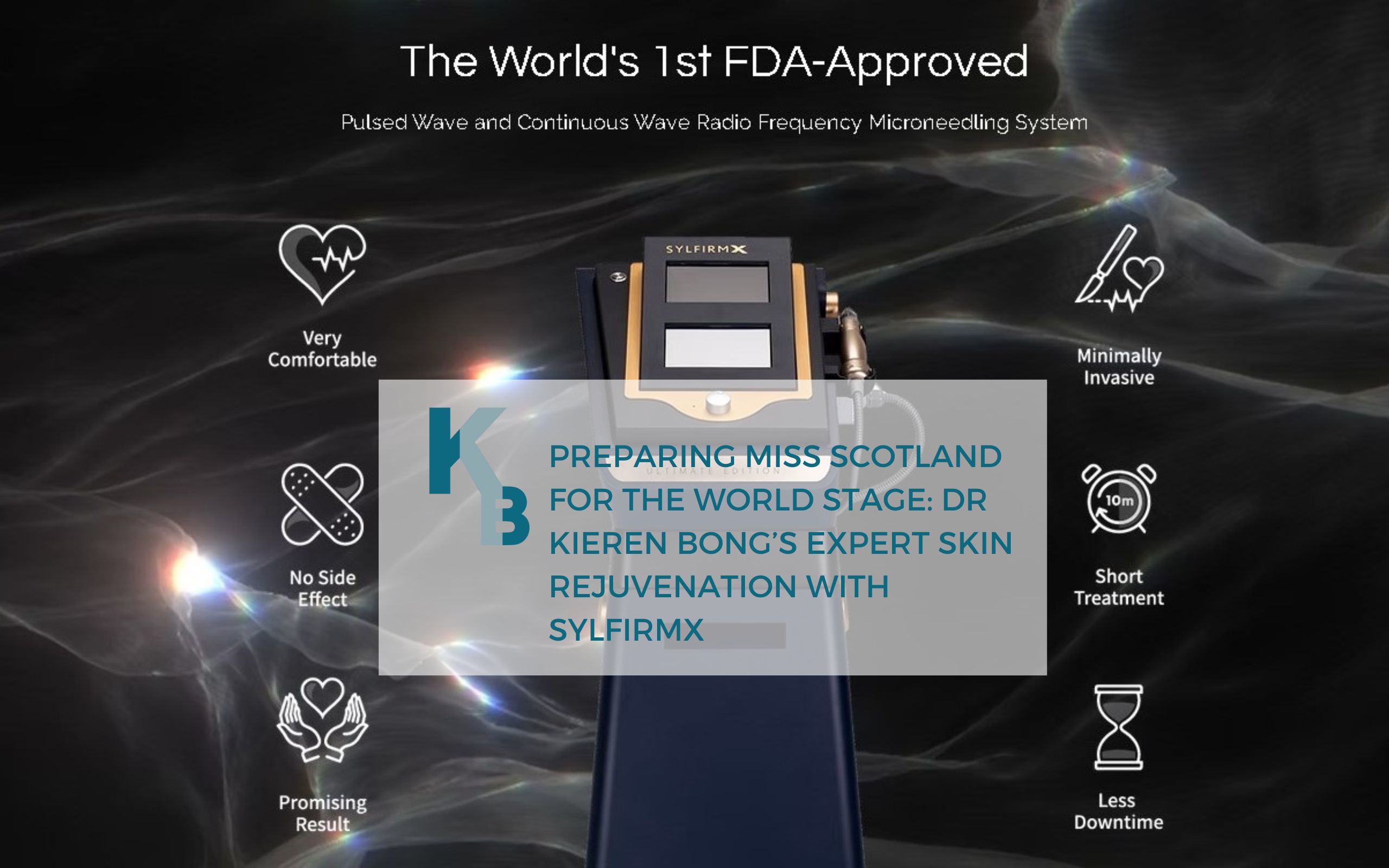What is Lumi Eyes?
Lumi Eyes, a polynucleotide under eyes treatment, has been gaining popularity in the UK. In April 2024, Dr Kieren Bong unveiled his exclusive treatment protocol, Polynucleotide EyeBright, an amalgamation of high-concentration polynucleotide and Botox, administered with an advanced injectable apparatus. Following its launch, we’ve been inundated with queries regarding the comparison between Dr Bong’s EyeBright and Lumi Eyes in Glasgow and Edinburgh.
 The point of contention is – Is Lumi Eyes, a relatively economical product hailing from Korea, capable of fulfilling its proclaimed results? Does the SCIENCE justifying it corroborate its promises? It’s pivotal to acknowledge that not all polynucleotide products are identical. Lumi Eyes, acclaimed for its affordability, has caught the interest of many. But does its effectiveness truly validate its price? In this post, we will explore the facts in depth, juxtaposing Lumi Eyes with Dr Bong’s Polynucleotide EyeBright treatment to gauge whether it truly withstands the competition.
The point of contention is – Is Lumi Eyes, a relatively economical product hailing from Korea, capable of fulfilling its proclaimed results? Does the SCIENCE justifying it corroborate its promises? It’s pivotal to acknowledge that not all polynucleotide products are identical. Lumi Eyes, acclaimed for its affordability, has caught the interest of many. But does its effectiveness truly validate its price? In this post, we will explore the facts in depth, juxtaposing Lumi Eyes with Dr Bong’s Polynucleotide EyeBright treatment to gauge whether it truly withstands the competition.
Understanding Polynucleotides
Polynucleotides are DNA fragments quintessential for cellular repair and regeneration. They enhance skin texture, hydration, and elasticity by facilitating collagen and elastin production. Consequently, they are favoured for anti-ageing treatments.
Lumi Eyes: The Economical Alternative
Lumi Eyes polynucleotide has carved its niche as a budget-friendly alternative in the market. Its lower cost is appealing, particularly for those seeking wallet-friendly skin rejuvenation solutions. Nonetheless, affordability often necessitates compromises, and Lumi Eyes is not exempt.
Necessity for Multiple Treatment Sessions
A prominent disadvantage of Lumi Eyes is the requirement for multiple treatment sessions to notice apparent results. Though this might seem like a minor inconvenience, it soon accumulates, not just in terms of cost but also time. Opposed to this, other leading polynucleotide brands often yield more impressive results with fewer sessions, hence being more time – and cost-efficient in the long haul.
A Lack of Scientific Evidence
Scientific validation is imperative for any medical or cosmetic procedure. Regrettably, Lumi Eyes falters in this aspect. More extensive clinical studies are needed to support its efficiency. Most of the available support is anecdotal, casting doubt on its reliability and efficacy. This starkly contrasts with other respected brands, which invest heavily in intensive research and clinical trials to validate their product’s advantages.
Lower Polynucleotide Concentration
Lumi Eyes encapsulates a polynucleotide concentration of roughly 2%, vastly inferior to the 20% concentration in Dr Bong’s Polynucleotide EyeBright. This scaled-down concentration facilitates affordability for Lumi Eyes treatments but also implies the necessity for more sessions to observe noticeable changes.
Less Precise Manual Injection Techniques

Lumi Eyes typically utilises a manual injection method for treatments. The area beneath the eyes hosts very delicate, thin skin, delivering the best results when polynucleotide is placed in the dermis – the middle layer of the skin. However, manual injections often penetrate too deeply, placing the polynucleotide lower than the dermis in the fatty tissue. Although some benefits are observed as the product permeates upwards toward the dermis, the already low 2% concentration in Lumi Eyes is further undermined upon reaching the targeted area. Conversely, Dr Bong’s EyeBright employs a cutting-edge, motorised injection device ensuring high precision control of injection depth, guaranteeing that the polynucleotide is accurately delivered into the dermis.
The Bottom Line
While the initial appeal of Lumi Eyes polynucleotide for under eyes might lie in its cost-effectiveness, its requirement for numerous treatments and deficient scientific support makes it less enticing in the long run. When pitted against well-established treatments like Dr Bong’s Polynucleotide EyeBright, Lumi Eyes cannot efficiently and effectively deliver the promised results.
For those earnest about reviving the quality of their under-eye skin, investments in treatments with proven efficacy and solid scientific backing are crucial. The upfront cost may be higher, but the substantial long-term benefits and reduced frequency of treatments mean Dr Bong’s Polynucleotide EyeBright treatment is more reliable. In polynucleotides, the precedence should always be given to quality and evidence-based outcomes over affordability.
Whether you are researching Lumi Eyes reviews or any other treatment you are considering, we always recommend thoroughly assessing all reviews and ask friends and family for referrals to make a more informed choice.




